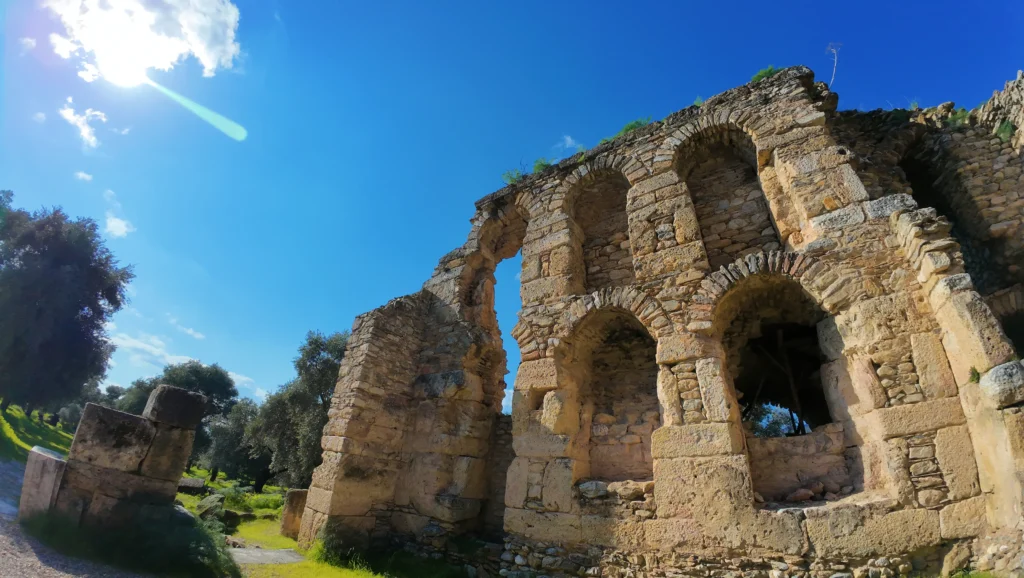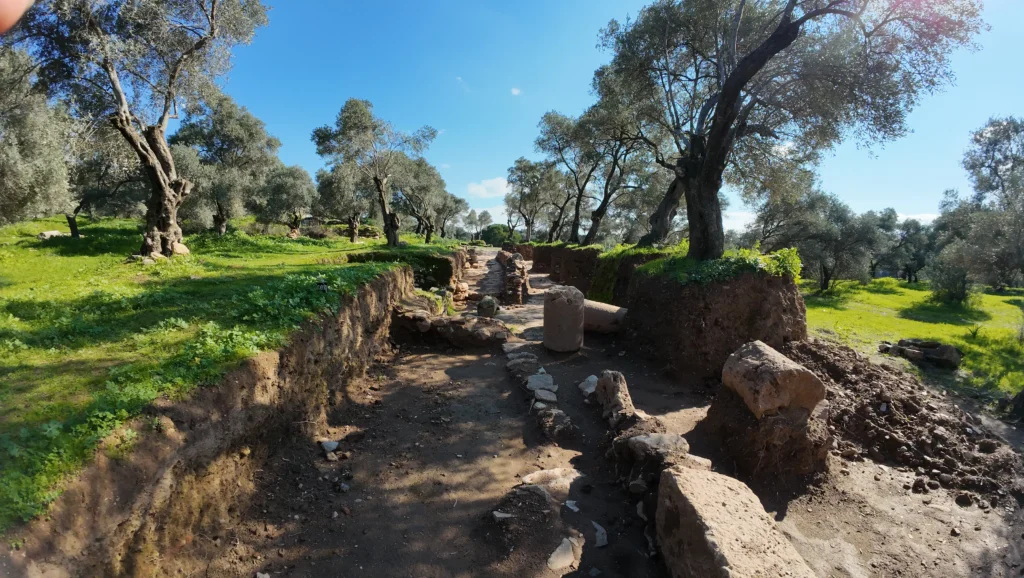If you have visited Ephesus, you know the drill: shoulder-to-shoulder crowds, the midday heat radiating off the marble, and the rush to snap a photo of the Celsus Library without a stranger’s selfie stick in the frame. But what if I told you there is another city, just an hour away, that offers the same Hellenistic grandeur but with total silence? Welcome to Nysa, the ancient city of stories. Located in the Sultanhisar district of Aydın, Nysa is visited by roughly 14,000 people a year—a fraction of the millions who descend on Ephesus. For the savvy traveler, this isn’t just a ruin; it is a sanctuary.
Here is why Nysa should be the top “hidden gem” on your Turkey itinerary.

1. Walk in the Footsteps of Strabo (Literally)
Nysa wasn’t just a settlement; it was a university town. The famous ancient geographer Strabo (64 BC – 24 AD) spent his youth studying here. When you walk the colonnaded streets, you are walking the exact path where the father of geography learned his trade.
The crown jewel of this intellectual heritage is the Library of Nysa. Built in the 2nd century AD, it is considered one of the best-preserved ancient libraries in Anatolia, second only to the Celsus Library in Ephesus.
- The details matter: Look closely at the walls. The library was built with a “double-wall” system to protect the papyrus scrolls from moisture—a feat of Roman engineering that has kept the structure standing for two millennia.

2. The Adventure: Into the 100-Meter Tunnel
Unlike the flat plains of other ancient cities, Nysa is dramatic. It straddles a deep ravine cut by a rushing river at the foot of the Messogis Mountains (modern Aydın Mountains).
To connect the two halves of the city, Roman engineers built a massive 100-meter-long tunnel (the Nysa Bridge) that still functions today.
- Traveler Tip: This isn’t a roped-off exhibit. You can actually walk through this underground vaulted passage. It appeals to the adventurer in all of us, offering a cool, shadowed break from the Aegean sun and a unique perspective on Roman infrastructure that you won’t get at manicured sites.
3. The Birthplace of Dionysus

Every ancient city has a patron god, but Nysa claims to be the childhood home of Dionysus, the god of wine and theater. According to mythology, Zeus entrusted the infant Dionysus to the nymphs of Mount Nysa to protect him from Hera’s wrath.
You can see this story carved in stone. The friezes on the theatre podium depict scenes from the life of Dionysus. The theatre itself is a masterpiece, with a capacity of 12,000 people, offering panoramic views of the olive groves and the Meander Valley below. It is the perfect spot for a “Golden Hour” photo—minus the crowds.
4. A Taste of Sultanhisar: The Strawberry Capital
History makes you hungry. Luckily, the modern town of Sultanhisar, which sits just 3km below the ruins, is famous for one thing: Strawberries. The region’s microclimate produces strawberries with a unique aroma and long shelf life, exported all the way to Russia and the Middle East. If you visit in May, you might catch the local “Culture, Art, and Strawberry Festival,” blending ancient heritage with modern harvest celebrations.
Practical Guide: How to Visit Nysa

Getting There
Nysa is incredibly accessible for independent travelers.
- By Train: The scenic Izmir-to-Denizli train line stops directly at Sultanhisar station. The trains run frequently (approx. every 4 hours), making it an easy day trip from Izmir or Selçuk.
- By Car: It is located on the main Aydın-Denizli highway, about 30km east of Aydın.
Entrance Fees & Hours of Nysa (2025)
- Entrance Fee: For foreign visitors, the fee is approximately 3 Euros (check current exchange rates for TRY equivalent).
- Opening Hours:
- Summer (April 1 – Oct 1): 09:00 – 19:00
- Winter (Oct 1 – April 1): 08:30 – 17:30.
Where to Stay & Eat near Nysa
- Stay: The Nysa Hotel in Sultanhisar is a convenient option, located just minutes from the ruins.
- Eat: After your hike, head to the town center for local pide or grab a box of fresh strawberries from a roadside vendor.
The Verdict: Nysa offers the history of Ephesus, the geography of a national park, and the solitude of a secret. Go now, before the rest of the world finds the map.


